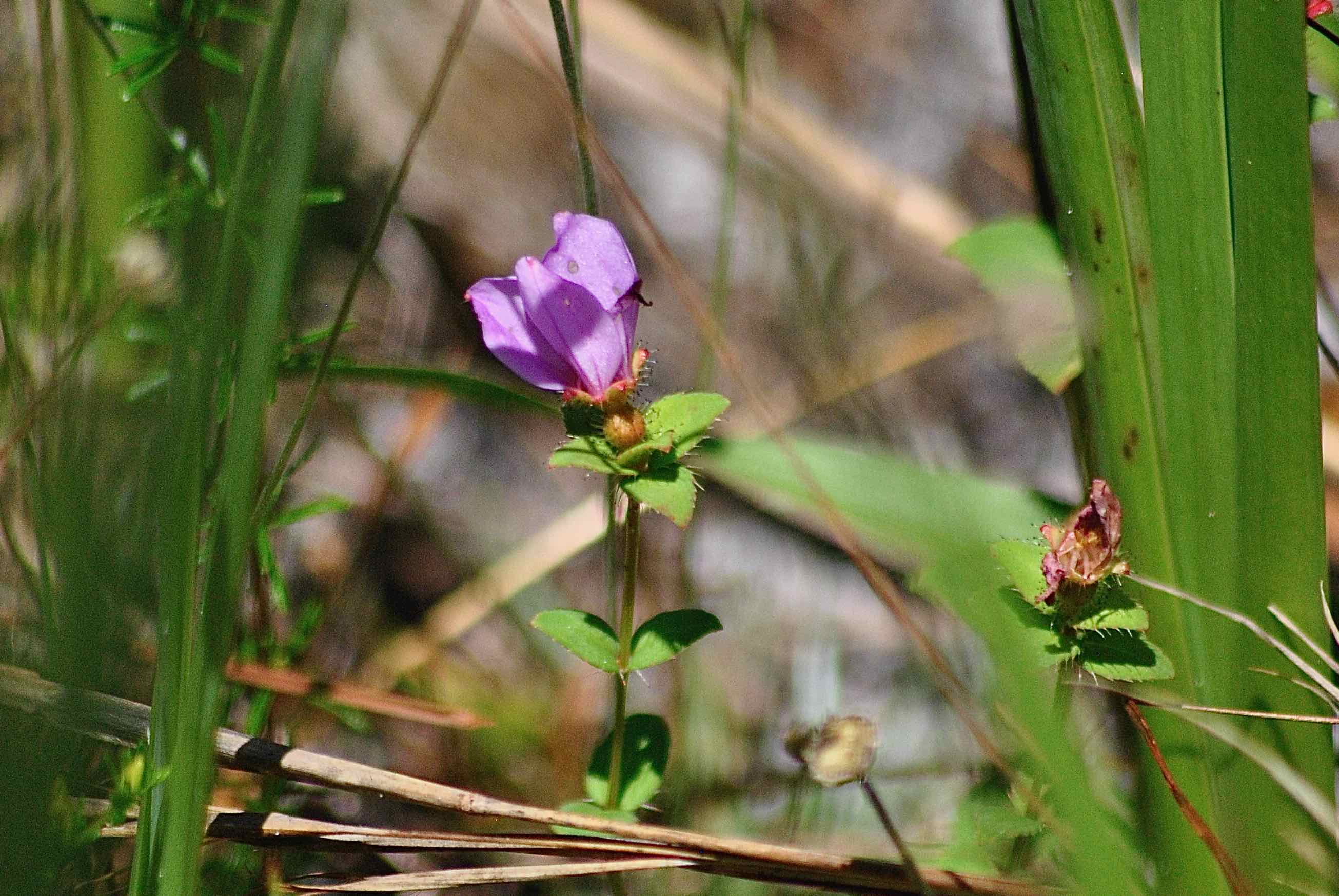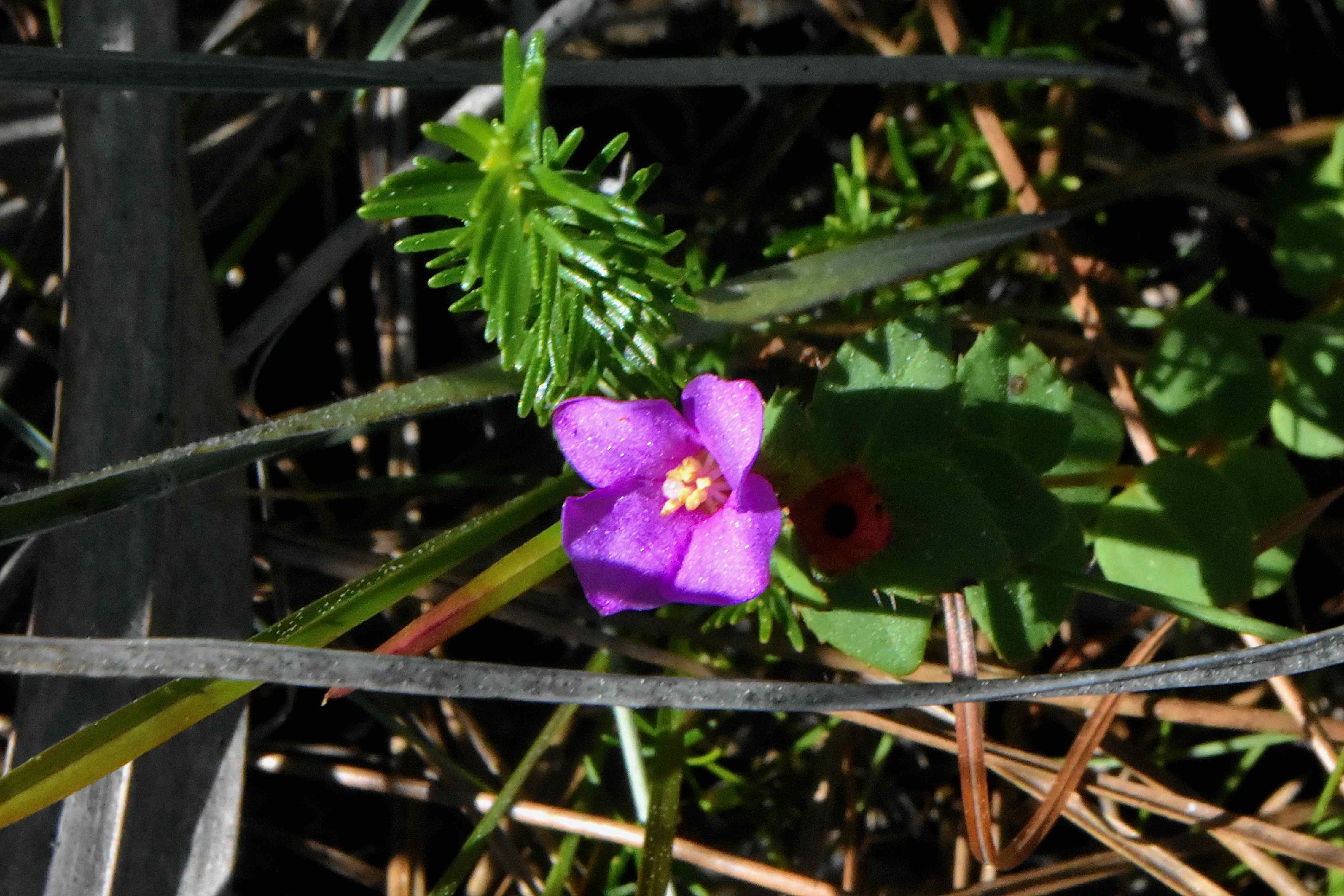
Nuttall's meadowbeauty, photographed at Jonathan Dickinson State Park, Hobe Sound, Martin County, in March 2024.
Nuttall’s meadowbeauty, Rhexia nuttallii is on the quiet side, pretty enough to catch your attention without having to shout its presence. Its bright blooms are hard to miss but there aren’t many of them and the plant itself tends to be small.
If you do spot Nuttall’s while wandering the wilds of South Florida, you’ve seen something rare. The Delray Beach-based Institute for Regional Conservation considers Nuttall’s meadowbeauty imperiled in this part of the state though it’s more common elsewhere.
Its native range extends throughout Florida, but it’s most widespread in the Peninsula as far south as Palm Beach and Collier counties. Nuttall’s meadowbeauty is also native to Georgia, but NatureServe considers it critically imperiled in the Peach Tree State. NatureServe lists Nuttall’s meadowbeauty as “apparently secure” in Florida.
Nuttall’s is one of five members of Rhexia — the meadowbeauties — found in South Florida, according to the IRC, all of which it considers rare, imperiled or critically imperiled.
Like its cousins, Nuttall’s is a perennial. It tends to grow in places with wet to moist soils — wet prairies, wet pinelands, depressions, mesic flatwoods and and pond margins. It tolerates full sun to part-shade.
It’s the flowers, of course, that bring attention to the plant. They’re about an inch across, pink to red to purple in color with four petals that are somewhat cupped. To our eye, they look as if they’re either just past their prime, or just opening up. Their distinctive look makes them easy to separate from from more common members of Rhexia, like West Indian meadowbeauty and pale meadowbeauty. They also have an urn-shaped calyx below the petals.
The plant goes dormant come winter, blooming spring into fall, though winter and spring in South Florida are relative terms. We’ve spotted Nutall’s meadowbeauty flowering as early as January in Atlantic Ridge Preserve State Park in Martin County.
The leaves are oval-shaped and serrated, and grow opposite each other along the stem.
Nuttall’s meadowbeauty is cultivated, grown in gardens with moist soil. However, finding plants might be difficult. We checked the Florida Association of Native Nurseries database of growers who might have Nuttall’s and came up blank.
So who is Nuttall? Thomas Nuttall, a 19th century English naturalist who explored North America and documented the plants and animals he found. Nuttall’s meadowbeauty was originally given the scientific name of Rhexia serrulata, and later changed to R nuttallii. Hence the common name.
Nuttall’s meadowbeauty is a member of Melastomaceae, a family of mostly tropical flowers.
Jonathan Dickinson State Park



